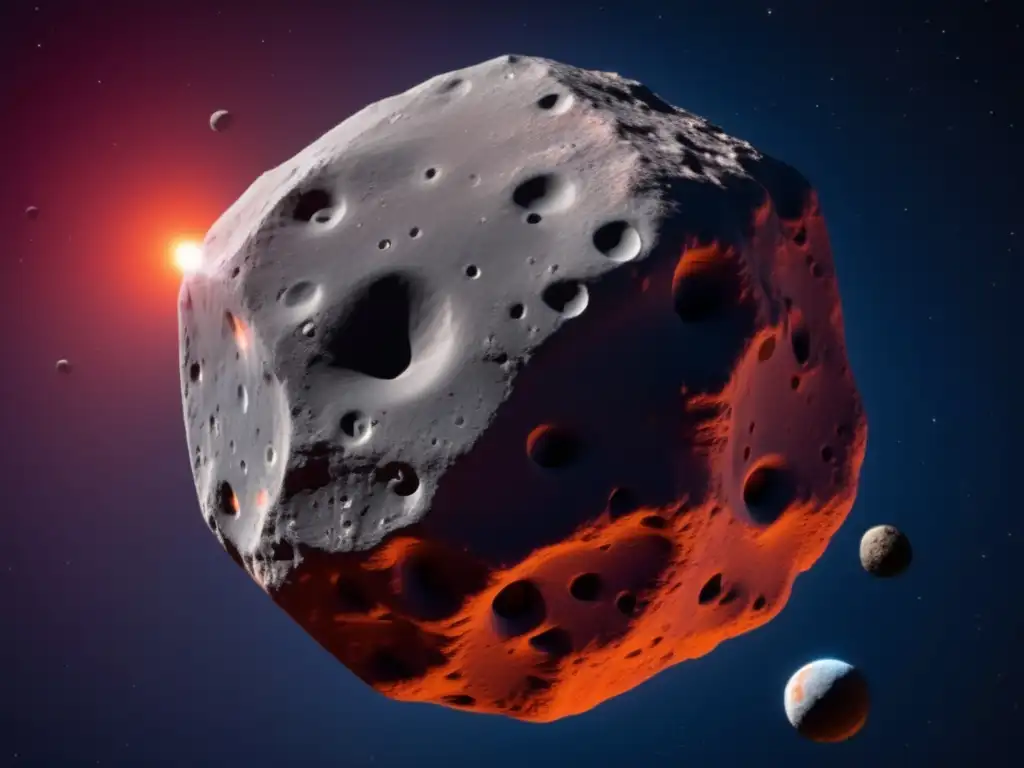The Discovery And Study Of 101955 Bennu

Introduction
The asteroid known as 101955 Bennu was discovered on September 11, 1999, by the Lincoln Near-Earth Asteroid Research (LINEAR) survey project. Bennu is a near-Earth asteroid and was named after the Egyptian mythological bird associated with the sun, creation, and rebirth. Bennu is particularly interesting because it is believed to be a remnant from the early solar system and could provide clues about the formation of planets and life on Earth. In this article, we will explore the discovery and study of Bennu and discover some interesting facts about this celestial object.
Bennu's Physical Characteristics

Size and Shape
Bennu has an estimated diameter of approximately 1,600 feet (490 meters), making it one of the larger near-Earth asteroids. It is also notably shaped like a spinning top, with a bulge around its equator, which scientists have attributed to the asteroid's rotation.
Composition
Bennu is classified as a B-type asteroid, meaning it is rich in carbon and likely contains both organic and water-bearing materials. These attributes make researchers curious about the potential for Bennu to contain life-supporting elements.
Orbit
Bennu orbits the Sun once every 1.2 years, and its trajectory periodically brings it very close to Earth. There is a small possibility that Bennu could collide with Earth in the future, but NASA scientists assert that there is no immediate threat of impact.
NASA's OSIRIS-REx Mission

Background
In 2016, NASA launched the OSIRIS-REx (Origins, Spectral Interpretation, Resource Identification, Security, Regolith Explorer) mission to study Bennu. The spacecraft traveled over 1.2 billion miles (2 billion kilometers) from Earth to Bennu and arrived there on December 3, 2018.
Objectives
The OSIRIS-REx mission has four primary objectives: to determine Bennu's physical and chemical properties, to collect a sample of the asteroid's surface material, to document the asteroid's geological, mineralogical, and geophysical features, and to advance our understanding of asteroid evolution and the formation of the solar system.
Mission Highlights
On October 20, 2020, after nearly two years of studying the asteroid's terrain, NASA's OSIRIS-REx spacecraft performed its first touchdown on Bennu's surface to collect a sample of its regolith (the layer of loose, fragmented rock and dust that covers the surface of the asteroid). The spacecraft gathered approximately 2.1 ounces (60 grams) of Bennu's regolith, marking the first time NASA has collected an asteroid sample.
The Future of Bennu Studies

Sample Analysis
Once OSIRIS-REx returns to Earth with the sample in 2023, scientists will be able to analyze it in detail to learn more about the asteroid's composition and history. Researchers hope that the data collected will provide insights into the organic materials that may have contributed to the emergence of life on Earth.
Impact Risk Assessment
NASA is also using the data gathered by OSIRIS-REx to refine its models for detecting and preventing asteroid impacts. By studying Bennu, scientists can gain a better understanding of how asteroids move and develop strategies to prevent future collisions with Earth.
Frequently Asked Questions

-
What is 101955 Bennu's size?
Bennu has an estimated diameter of approximately 1,600 feet (490 meters).
-
What type of asteroid is Bennu?
Bennu is classified as a B-type asteroid, meaning it is rich in carbon and likely contains both organic and water-bearing materials.
-
What is the OSIRIS-REx mission?
The OSIRIS-REx mission is a NASA project to study Bennu, collect a sample of its surface material, document its geological and mineralogical features, and advance our understanding of asteroid evolution and the formation of the solar system.
-
When did the OSIRIS-REx spacecraft perform its first touchdown on Bennu's surface?
The OSIRIS-REx spacecraft performed its first touchdown on Bennu's surface on October 20, 2020.
-
When will OSIRIS-REx return to Earth with the sample collected from Bennu?
OSIRIS-REx is expected to return to Earth with the sample in 2023.
Conclusion
Bennu has proven to be a fascinating object of study for scientists interested in learning more about the early solar system and the potential for life-supporting elements in space. NASA's OSIRIS-REx mission has achieved significant milestones in advancing our knowledge of Bennu, and researchers are eager to examine the sample collected from the asteroid's regolith. Stay tuned for additional developments in the exciting field of asteroid studies.
Additional Resources

- NASA's OSIRIS-REx Mission Website
- PBS NOVA Documentary: The Asteroid Offense
- Meet Bennu, the Weird Spinning Top Asteroid
 Albert: The Lost And Found Asteroid
Albert: The Lost And Found Asteroid Unveiling Hygiea: A Look Into The Discovery Of The Fourth Largest Asteroid
Unveiling Hygiea: A Look Into The Discovery Of The Fourth Largest Asteroid The Dawn Mission: Exploring Vesta And Ceres
The Dawn Mission: Exploring Vesta And CeresIf you want to discover more articles similar to The Discovery And Study Of 101955 Bennu, you can visit the Asteroid Discoveries category.
Leave a Reply

Articulos relacionados: